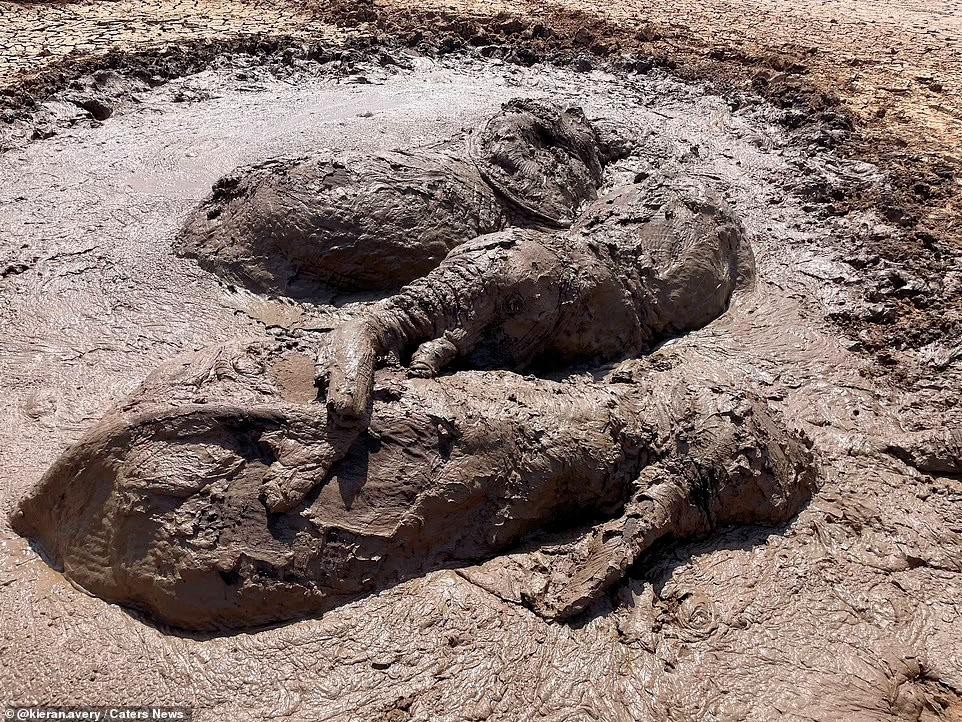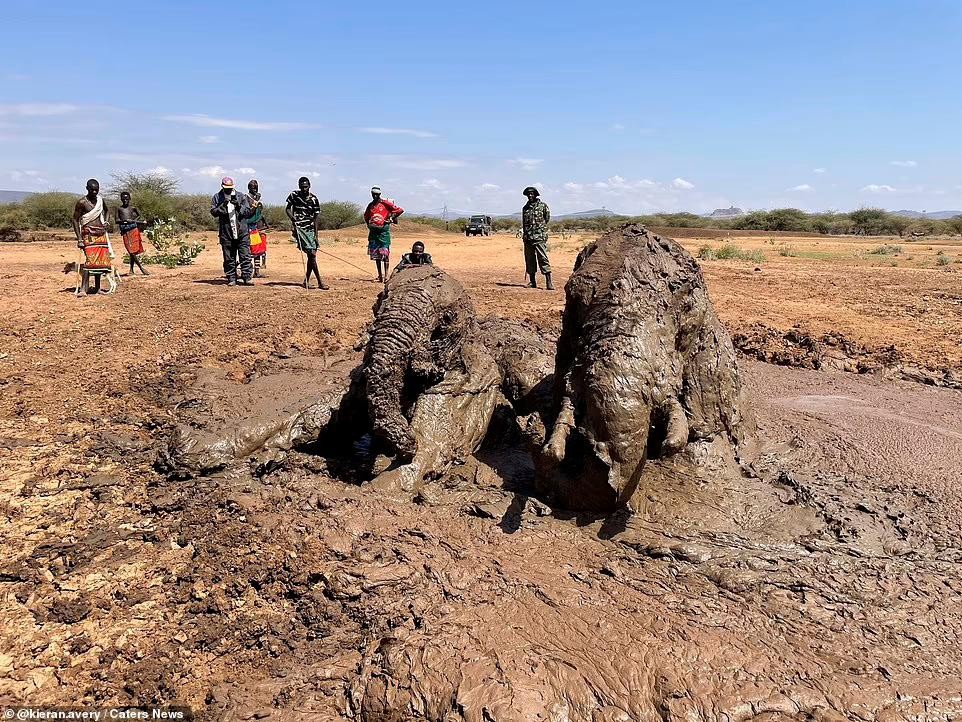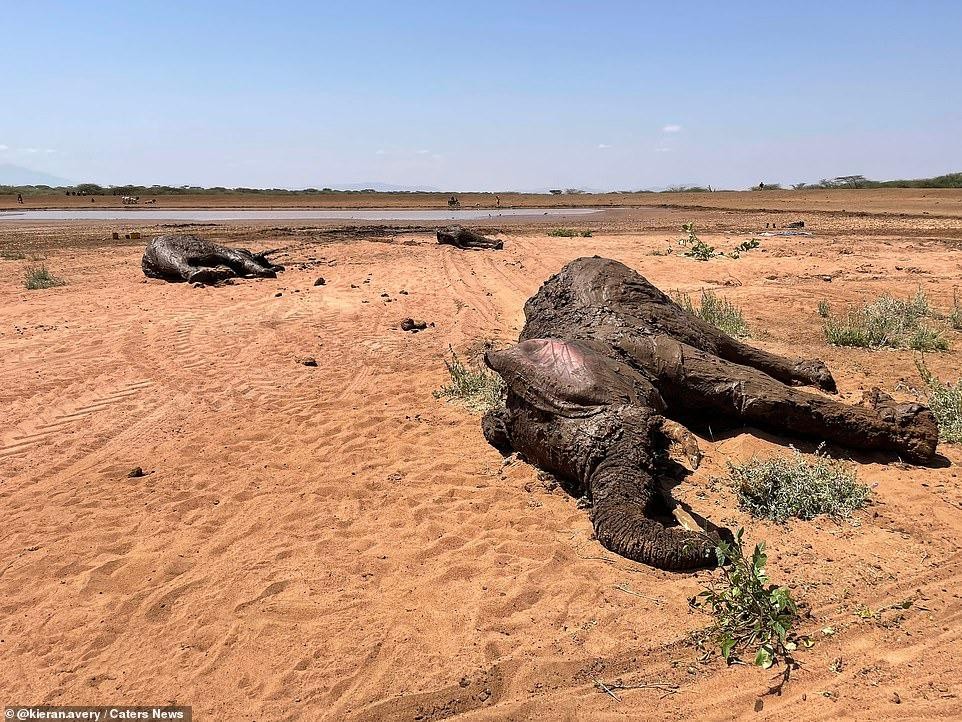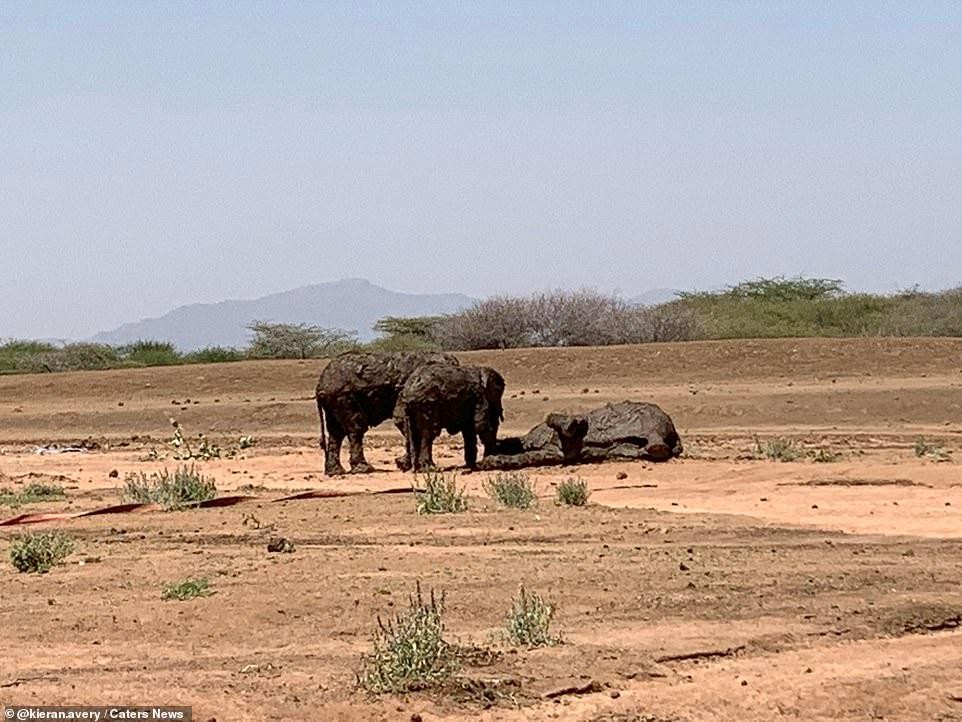Rescuing a large herd of African elephants trapped in a muddy swamp.

Dr. Kieran Avery, along with a team of dedicated individuals including veterinarians and wildlife conservationists, recently formed a group to undertake an incredibly challenging mission.
It all began with distress calls from the community regarding a family of three elephants trapped in a muddy swamp in the Kenyan wilderness.
 The elephant herd, consisting of a mother elephant and her two calves, was trapped in a muddy swamp within the Isiolo County Wildlife Reserve in Kenya.
The elephant herd, consisting of a mother elephant and her two calves, was trapped in a muddy swamp within the Isiolo County Wildlife Reserve in Kenya.
Due to the deteriorating condition of the elephant family, the rescue team had to act urgently and Dr. Kieran Avery was entrusted with leading the rescue mission. Dr. Avery was chosen for his extensive experience in wildlife rescue operations, particularly in challenging situations.
 In order to rescue the elephants, a team of experts led by Dr. Kieran Avery promptly arrived at the scene.
In order to rescue the elephants, a team of experts led by Dr. Kieran Avery promptly arrived at the scene.
According to Dr. Avery, the task was quite challenging, and it took the team approximately 2 hours to successfully rescue the trapped elephant family in Isiolo County Wildlife Reserve. To achieve this, the team had to carefully plan their actions, ensuring both speed and safety.
 The rescue operation was particularly complex due to the large size of the elephants.
The rescue operation was particularly complex due to the large size of the elephants.
The nature of this operation required the team of experts to carefully strap harnesses onto each elephant and ensure that the heavy machinery used to lift them out of the mud would not be obstructed by their trunks, thus minimizing the risk of any unnecessary accidents or injuries during the rescue process.
Regarding the cause of the incident, Dr. Avery explained, “Based on our speculation, it is likely that the mother elephant or one of the calves had initially gotten stuck in the mud, and other members of the family attempted to come to their aid. However, it seems that their collective efforts were unsuccessful, resulting in the entire elephant family becoming firmly trapped beneath the muddy surface. Elephants are known for their strong bonds and unwavering loyalty, so they would never abandon any member of their herd.”
 With great effort, the team of experts successfully rescued the trapped elephant family. They were able to alleviate the exhaustion and distress caused by hours of being stuck in the mud.
With great effort, the team of experts successfully rescued the trapped elephant family. They were able to alleviate the exhaustion and distress caused by hours of being stuck in the mud.
With the concerted effort and seamless coordination of the team, the rescue operation concluded remarkably successfully, with no elephants in the herd sustaining injuries despite showing signs of exhaustion.
All the elephants were safely transferred to a secure area, and after a period of rest, they began to regain consciousness. Surprisingly, the smallest elephant showed the quickest recovery, followed by the larger one, and finally, the mother elephant. The mother elephant appeared visibly fatigued and required nearly half an hour of rest before taking her first tentative steps.
 The mother elephant appears to be extremely exhausted, requiring more time to recover.
The mother elephant appears to be extremely exhausted, requiring more time to recover.
African elephants are highly endangered species and are currently listed in the International Union for Conservation of Nature (IUCN) Red List. Today, only 2 out of the 6 African elephant species remain, namely the African bush elephant and the African forest elephant. The other four African elephant species became extinct between the 18th and 20th centuries, with only fossil evidence found by scientists remaining of their existence.








